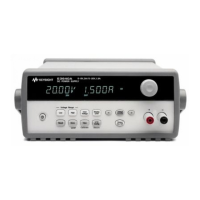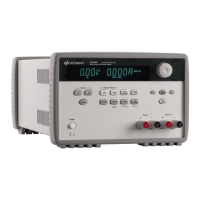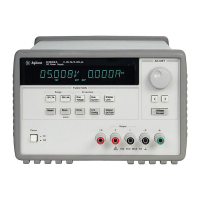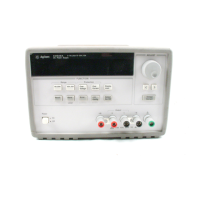Chapter 2 General Information
Output Connections
36
Reverse Current Loading
An active load connected to the power supply may actually deliver a reverse current
to the supply during a portion of its operating cycle. An external source can not be
allowed to pump current into the supply without risking loss of regulation and possible
damage. These effects can be avoided by pre-loading the output with a dummy load
resistor. The dummy load resistor should draw at least the same amount of current
from the supply as the active load may deliver to the supply. The value of the current
for the dummy load plus the value of the current the load draws from the supply must
be less than the maximum current of the supply.
Remote Voltage Sensing Connections
Remote voltage sensing is used to maintain regulation at the load and reduce the
degradation of regulation that would occur due to the voltage drop in the leads between
the power supply and the load.
When the power supply is connected for remote sensing, the OVP circuit senses the
voltage at the sensing points (load) and not the output terminals.
Connections between the power supply sensing and output terminals should be
removed, and using shielded two-wire cable, the power supply sensing terminals
should be connected to the load as shown in Figure 2-1. Do not use the shield as one
of the sensing conductors and the other end should be left unconnected. Connect one
end of the sensing lead shield to the chassis ground ( ) only. Opening a sensing lead
causes the power supply output voltage to decrease at the load leads. Observe polarity
when connecting the sensing leads to the load.
Figure 2-1. Remote Voltage Sensing Connections
Figure 2-2. Local Sensing Connections

